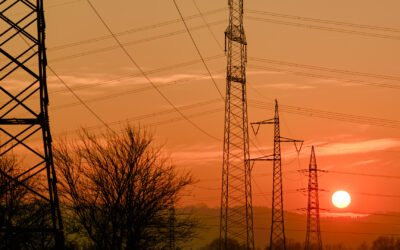- Understanding the roles and interactions of these key players is essential to comprehend the complexities and opportunities within the US electricity sector.
- FERC is an independent regulatory agency that regulates the interstate transmission of electricity within the US.
- The collaborative efforts of regulatory agencies, ISOs/RTOs, and utilities are indispensable to the vitality and sustainability of the US electricity sector
Key Players in the Electricity Sector
Regulatory Agencies
FERC
To maintain FERC’s regulatory independence, the president and Congress cannot review the agency’s decisions. However, the Federal Courts have the power to review FERC’s decisions. Furthermore, regulation of retail electricity sales, approval of construction of generation assets, regulation of nuclear power plants, and reliability assessment of distribution networks do not fall under the ambit of FERC.
NERC
State Regulatory Agencies
Within their jurisdiction, State commissions decide on fair and reasonable rates for electric service. These commissions adopt and enforce regulations that ensure the safety and interest of consumers, evaluate the economic and environmental impact of utility operations, and mediate disputes between the utility and consumers.
The State Department of Environmental Protection regulates the State’s air, land, and water resources. It issues permits for the construction of pollutant-emitting assets, ensures public safety by cleaning contaminated sites, and monitors companies’ emissions.

Figure 1: Regulatory agencies in the US.
Source: PTR Inc.
Independent System Operators/Regional Transmission Organizations
On the other hand, RTO performs functions similar to an ISO, but the extent of responsibility for the transmission network, as decided by the FERC, is on the higher side. RTOs are responsible for the coordination, control, and monitoring of the power system within their territory. ISOs/RTOs are also involved in regional planning to make sure that the requirements of the system in terms of infrastructure are adequately met.
Earlier, when there weren’t any ISOs/RTOs, utilities were responsible for transmission planning. In areas that do not fall under the ambit of ISOs/RTOs, utilities are still carrying out transmission planning themselves.
In North America, there are seven ISOs and four RTOs. Seven ISOs include California ISO, New York ISO, Electric Reliability Council of Texas, Midcontinent Independent System Operator, ISO New England, Alberta Electric System Operator, Independent Electricity System Operator. Four RTOs include PJM Interconnection, Midcontinent Independent System Operator, Southwest Power Pool, and ISO New England.

Figure 2: ISOs and RTOs in the US.
Source: PTR Inc.
Utilities
Investor-Owned Utilities
Public Power Utilities
Cooperatives
Federal Power Programs
Independent Power Producers

Figure 3: Types of utilities in the US.
Source: PTR Inc.
Looking Ahead
ISOs/RTOs facilitate the seamless transmission of electricity across diverse geographic regions, enhancing grid reliability and resilience against disruptions. Utilities, operating at the forefront of energy delivery, continue to diversify their portfolios with cleaner, renewable energy sources while maintaining the stability of existing infrastructure.
As these key players adapt to emerging challenges such as climate change and technological innovation, their collective efforts will shape a resilient electricity sector capable of meeting the needs of future generations.
Europe: +49-89-12250950
Americas: +1 408-604-0522
Japan: +81-80-7808-1378
GCC/Rest of APAC: +971-58-1602441
More About our: Electrical Infrastructure Market Intelligence
Recent Insights
US Elections: Consequences of a Second Trump Presidency for Energy Sector
The US is making strides to move away from fossil fuels and eventually decarbonize the energy sector. The White House aims to achieve 80% renewable energy generation by 2030 and 100% carbon-free electricity by 2035. On the other hand, for electric vehicles, it has set...
CITAP Program: A Game Changer for the US Transmission
The US faces significant challenges, including lengthy approval processes, bureaucratic hurdles, and a growing interconnection queue that delays the implementation of crucial transmission projects. Addressing these limitations is not just a matter of efficiency but a...
COP28’s Global Stocktake: A Pivotal Undertaking?
The global stocktake, a quinquennial undertaking, functions as a meticulous inventory of worldwide initiatives in climate action and support, with its inaugural culmination slated for COP28 in a bid to influence the ensuing round of nationally determined contributions...
US Elections: Consequences of a Second Trump Presidency for Energy Sector
The US is making strides to move away from fossil fuels and eventually decarbonize the energy sector. The White House aims to achieve 80% renewable energy generation by 2030 and 100% carbon-free electricity by 2035. On the other hand, for electric vehicles, it has set...
CITAP Program: A Game Changer for the US Transmission
The US faces significant challenges, including lengthy approval processes, bureaucratic hurdles, and a growing interconnection queue that delays the implementation of crucial transmission projects. Addressing these limitations is not just a matter of efficiency but a...
COP28’s Global Stocktake: A Pivotal Undertaking?
The global stocktake, a quinquennial undertaking, functions as a meticulous inventory of worldwide initiatives in climate action and support, with its inaugural culmination slated for COP28 in a bid to influence the ensuing round of nationally determined contributions...
COP28: Balancing Hope and Skepticism in Climate Talks
The Conference of the Parties (COP) is the primary decision-making body of the United Nations Framework Convention on Climate Change (UNFCCC). This annual gathering of member states focuses on addressing global climate change. In the lead up to COP28, amid the rising...



